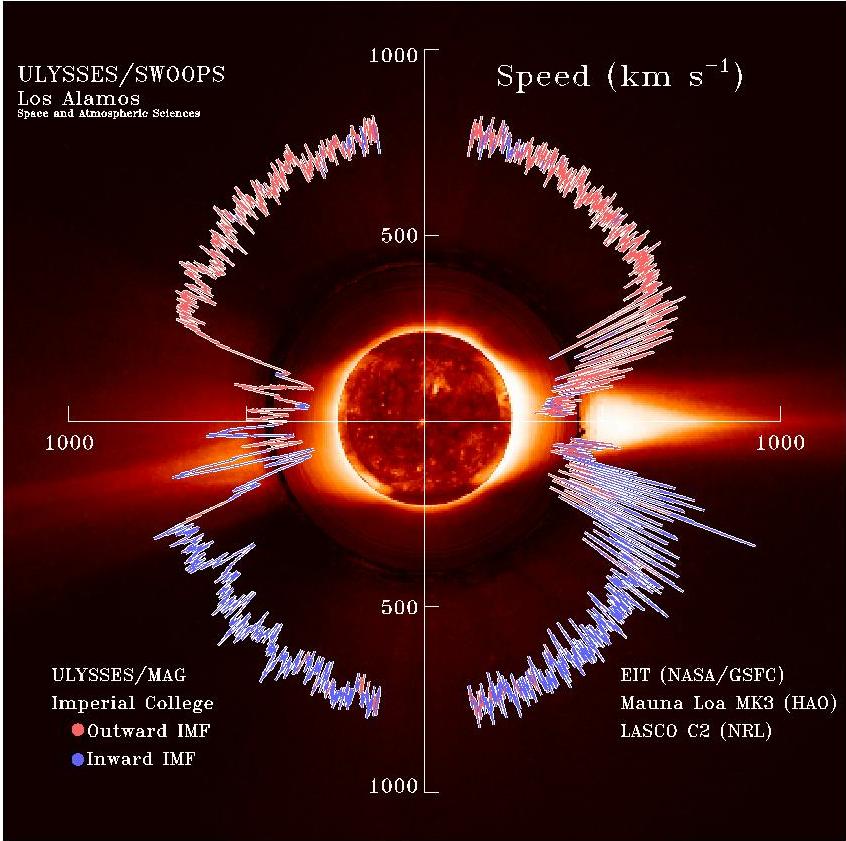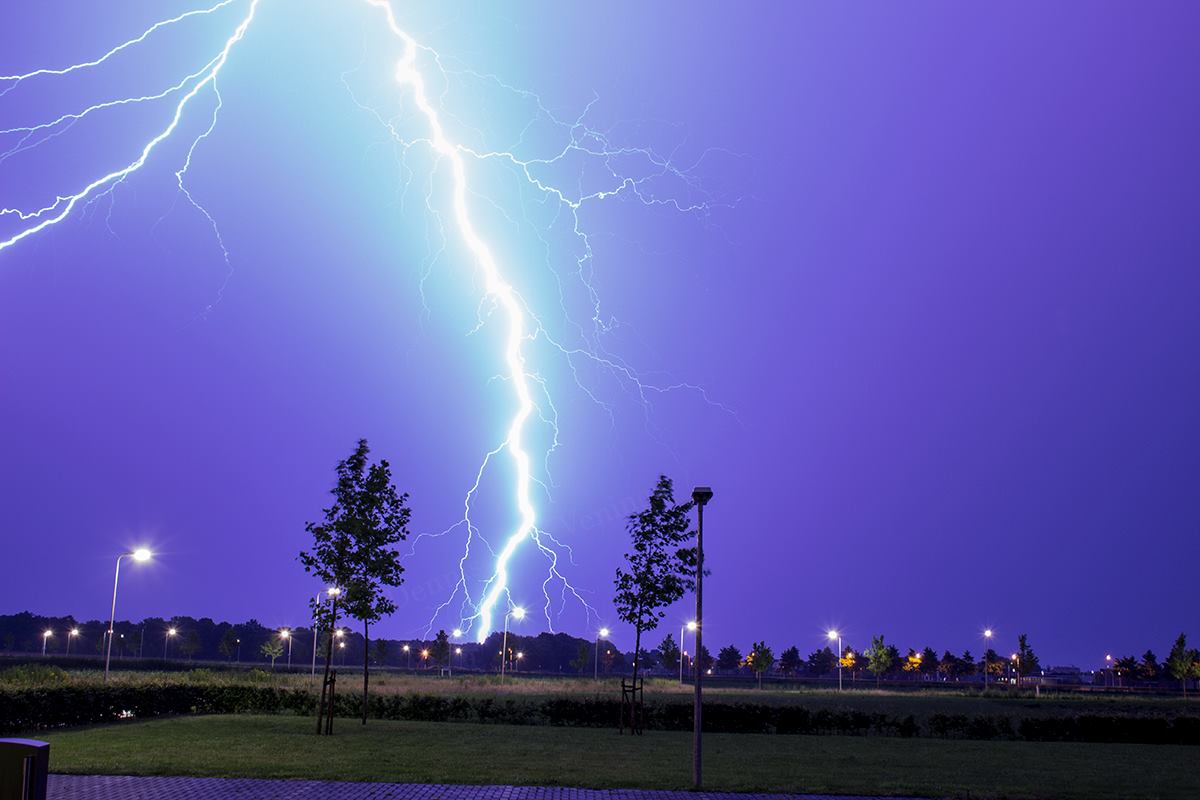|
Magnetopause
The magnetopause is the abrupt boundary between a magnetosphere and the surrounding Plasma (physics), plasma. For planetary science, the magnetopause is the boundary between the planet's magnetic field and the solar wind. The location of the magnetopause is determined by the balance between the pressure of the dynamic planetary magnetic field and the dynamic pressure of the solar wind. As the solar wind pressure increases and decreases, the magnetopause moves inward and outward in response. Waves (ripples and flapping motion) along the magnetopause move in the direction of the solar wind flow in response to small-scale variations in the solar wind pressure and to Kelvin–Helmholtz instability, Kelvin–Helmholtz instabilities. The solar wind is supersonic and passes through a bow shock where the direction of flow is changed so that most of the solar wind plasma is deflected to either side of the magnetopause, much like water is deflected before the bow of a ship. The zone of sh ... [...More Info...] [...Related Items...] OR: [Wikipedia] [Google] [Baidu] |
Magnetosphere
In astronomy and planetary science, a magnetosphere is a region of space surrounding an astronomical object in which charged particles are affected by that object's magnetic field. It is created by a celestial body with an active interior Dynamo theory, dynamo. In the space environment close to a planetary body with a dipole magnetic field such as Earth, the field lines resemble a simple magnetic dipole. Farther out, field lines can be significantly distorted by the flow of electrically conducting plasma (physics), plasma, as emitted from the Sun (i.e., the solar wind) or a nearby star. Planets having active magnetospheres, like the Earth, are capable of mitigating or blocking the effects of solar radiation or cosmic radiation. Interactions of particles and atmospheres with magnetospheres are studied under the specialized scientific subjects of plasma physics, space physics, and aeronomy. History Study of Earth's magnetosphere began in 1600, when William Gilbert (astronomer), W ... [...More Info...] [...Related Items...] OR: [Wikipedia] [Google] [Baidu] |
Dungey Cycle
The Dungey cycle, officially proposed by James Dungey in 1961, is a phenomenon that explains interactions between a planet's magnetosphere and solar wind. Dungey originally proposed a cyclic behavior of magnetic reconnection between Earth's magnetosphere and flux of solar wind. This reconnection explained previously observed dynamics within Earth's magnetosphere. The rate of reconnection in the beginning of the cycle is dependent on the orientation of the interplanetary magnetic field as well as the resultant plasma conditions at the site of reconnection. On Earth, the reconnection cycle takes around 1 hour, but this differs from planet to planet. Cyclic Behavior The Dungey cycle occurs within three stages: # In the first stage, solar flux and the magnetopause connect, creating an opening in the magnetopause in which the solar wind can enter the magnetosphere. This opening is called the dayside reconnection and occurs on the side of the magnetosphere facing the solar wind source ... [...More Info...] [...Related Items...] OR: [Wikipedia] [Google] [Baidu] |
Solar Wind
The solar wind is a stream of charged particles released from the Sun's outermost atmospheric layer, the Stellar corona, corona. This Plasma (physics), plasma mostly consists of electrons, protons and alpha particles with kinetic energy between . The composition of the solar wind plasma also includes a mixture of particle species found in the solar plasma: trace amounts of heavy ions and atomic nuclei of Chemical element, elements such as carbon, nitrogen, oxygen, neon, magnesium, silicon, sulfur, and iron. There are also rarer traces of some other nuclei and isotopes such as phosphorus, titanium, chromium, and nickel's isotopes 58Ni, 60Ni, and 62Ni. Superimposed with the solar-wind plasma is the interplanetary magnetic field. The solar wind varies in density, temperature and speed over time and over Solar coordinate systems#Heliographic, solar latitude and longitude. Its particles can escape the Sun's gravity because of their high energy resulting from the high temperature of t ... [...More Info...] [...Related Items...] OR: [Wikipedia] [Google] [Baidu] |
Magnetic Reconnection
Magnetic reconnection is a physical process occurring in electrically conducting Plasma (physics), plasmas, in which the magnetic topology is rearranged and magnetic energy is converted to kinetic energy, thermal energy, and particle acceleration. Magnetic reconnection involves plasma flows at a substantial fraction of the Alfvén wave speed, which is the fundamental speed for mechanical information flow in a magnetized plasma. The concept of magnetic reconnection was developed in parallel by researchers working in solar physics and in the interaction between the solar wind and magnetized planets. This reflects the bidirectional nature of reconnection, which can either disconnect formerly connected magnetic fields or connect formerly disconnected magnetic fields, depending on the circumstances. Ron Giovanelli is credited with the first publication invoking magnetic energy release as a potential mechanism for particle acceleration in Solar flare, solar flares. Giovanelli propose ... [...More Info...] [...Related Items...] OR: [Wikipedia] [Google] [Baidu] |
Magnetosheath
The magnetosheath is the region of space between the magnetopause and the bow shock of a planet's magnetosphere. The regularly organized magnetic field generated by the planet becomes weak and irregular in the magnetosheath due to interaction with the incoming solar wind, and is incapable of fully deflecting the highly charged particles. The density of the particles in this region is considerably lower than what is found beyond the bow shock, but greater than within the magnetopause, and can be considered a transitory state. Scientific research into the exact nature of the magnetosheath has been limited due to a longstanding misconception that it was a byproduct of the bow shock/magnetopause interaction and had no inherently important properties of its own. Recent studies indicate, however, that the magnetosheath is a dynamic region of turbulent plasma flow which may play an important role in the structure of the bow shock and the magnetopause, and might help to dictate the flo ... [...More Info...] [...Related Items...] OR: [Wikipedia] [Google] [Baidu] |
Plasma (physics)
Plasma () is a state of matter characterized by the presence of a significant portion of charged particles in any combination of ions or electrons. It is the most abundant form of ordinary matter in the universe, mostly in stars (including the Sun), but also dominating the rarefied intracluster medium and Outer space#Intergalactic space, intergalactic medium. Plasma can be artificially generated, for example, by heating a neutral gas or subjecting it to a strong electromagnetic field. The presence of charged particles makes plasma electrically conductive, with the dynamics of individual particles and macroscopic plasma motion governed by collective electromagnetic fields and very sensitive to externally applied fields. The response of plasma to electromagnetic fields is used in many modern devices and technologies, such as plasma display, plasma televisions or plasma etching. Depending on temperature and density, a certain number of neutral particles may also be present, in wh ... [...More Info...] [...Related Items...] OR: [Wikipedia] [Google] [Baidu] |
Bow Shock
In astrophysics, bow shocks are shock waves in regions where the conditions of density and pressure change dramatically due to blowing stellar wind. Bow shock occurs when the magnetosphere of an astrophysical object interacts with the nearby flowing ambient plasma such as the solar wind. For Earth and other magnetized planets, it is the boundary at which the speed of the stellar wind abruptly drops as a result of its approach to the magnetopause. For stars, this boundary is typically the edge of the astrosphere, where the stellar wind meets the interstellar medium. Description The defining criterion of a shock wave is that the bulk velocity of the plasma drops from " supersonic" to "subsonic", where the speed of sound cs is defined by c_s^2 = \gamma p/ \rho where \gamma is the ratio of specific heats, p is the pressure, and \rho is the density of the plasma. A common complication in astrophysics is the presence of a magnetic field. For instance, the charged particl ... [...More Info...] [...Related Items...] OR: [Wikipedia] [Google] [Baidu] |
Kelvin–Helmholtz Instability
The Kelvin–Helmholtz instability (after Lord Kelvin and Hermann von Helmholtz) is a fluid instability that occurs when there is shear velocity, velocity shear in a single continuum mechanics, continuous fluid or a velocity difference across the interface between two fluids. Kelvin-Helmholtz instabilities are visible in the atmospheres of planets and moons, such as in List of cloud types, cloud formations on Earth or the Great Red Spot#Great Red Spot, Red Spot on Jupiter, and the Stellar atmosphere, atmospheres of the Sun and other stars. Theory overview and mathematical concepts Fluid dynamics predicts the onset of instability and transition to turbulent flow within fluids of different density, densities moving at different speeds. If surface tension is ignored, two fluids in parallel motion with different velocities and densities yield an interface that is unstable to short-wavelength perturbations for all speeds. However, surface tension is able to stabilize the short w ... [...More Info...] [...Related Items...] OR: [Wikipedia] [Google] [Baidu] |
Henry (unit)
The henry (symbol: H) is the unit of electrical inductance in the International System of Units (SI), defined as 1 kg⋅ m2⋅ s−2⋅ A−2. If a current of 1 ampere flowing through a coil produces flux linkage of 1 weber turn, that coil has a self-inductance of 1 henry. The unit is named after Joseph Henry (1797–1878), the American scientist who discovered electromagnetic induction independently of and at about the same time as Michael Faraday (1791–1867) in England. Definition The inductance of an electric circuit is one henry when an electric current that is changing at one ampere per second results in an electromotive force of one volt The volt (symbol: V) is the unit of electric potential, Voltage#Galvani potential vs. electrochemical potential, electric potential difference (voltage), and electromotive force in the International System of Units, International System of Uni ... across the inductor: V(t)= L \frac\,, where is the resulting voltage ac ... [...More Info...] [...Related Items...] OR: [Wikipedia] [Google] [Baidu] |
Permeability Constant
The vacuum magnetic permeability (variously ''vacuum permeability'', ''permeability of free space'', ''permeability of vacuum'', ''magnetic constant'') is the magnetic permeability in a classical vacuum. It is a physical constant, conventionally written as ''μ''0 (pronounced "mu nought" or "mu zero"), approximately equal to 4π × 10−7 H/m (by the former definition of the ampere). It quantifies the strength of the magnetic field induced by an electric current. Expressed in terms of SI base units, it has the unit kg⋅ m⋅ s−2⋅A−2. It can be also expressed in terms of SI derived units, N⋅A−2, H·m−1, or T·m·A−1, which are all equivalent. Since the revision of the SI in 2019 (when the values of '' e'' and '' h'' were fixed as defined quantities), ''μ''0 is an experimentally determined constant, its value being proportional to the dimensionless fine-structure constant, which is known to a relative uncertainty of with no other dependencie ... [...More Info...] [...Related Items...] OR: [Wikipedia] [Google] [Baidu] |
Mercury Symbol (fixed Width)
Planetary symbols are used in astrology and traditionally in astronomy to represent a classical planet (which includes the Sun and the Moon) or one of the modern planets. The classical symbols were also used in alchemy for the seven metals known to the ancients, which were associated with the planets, and in calendars for the seven days of the week associated with the seven planets. The original symbols date to Greco-Roman astronomy; their modern forms developed in the 16th century, and additional symbols would be created later for newly discovered planets. The seven classical planets, their symbols, days and most commonly associated planetary metals are: The International Astronomical Union (IAU) discourages the use of these symbols in modern journal articles, and their style manual proposes one- and two-letter abbreviations for the names of the planets for cases where planetary symbols might be used, such as in the headings of tables. The modern planets with their tradition ... [...More Info...] [...Related Items...] OR: [Wikipedia] [Google] [Baidu] |







